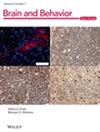Incidence and Risk Factors of Post-Lumbar Puncture Headache in Patients With Cognitive Impairment
Abstract
Background
Cognitive impairment is prevalent among the elderly population. Cerebrospinal fluid (CSF) biomarker tests are employed to facilitate timely and differential diagnosis of cognitive dysfunction.
Objective
To investigate incidence and risk factors of post-lumbar puncture headache (PLPH) in Chinese geriatric patients with cognitive impairment.
Methods
A total of 254 consecutive patients with cognitive impairment were recruited between March and September 2023 and categorized into two groups: mild cognitive impairment (MCI) and dementia. Different scales, such as the short-form of the McGill pain questionnaire (SF-MPQ), facial visual analogue scale (F-VAS), revised Wong-Baker Assessment of Facial Expression Pain (FPS-R), and Chinese version of Pain Assessment Scale for Advanced Dementia (C-PAINAD), were used to evaluate the incidence of headache after lumbar puncture. Univariate and multivariate factor analyses were conducted to identify potential risk factors, with the most influential predictors included in regression models.
Results
Among patients with cognitive disorders, the incidence of PLPH was 24.8%. The incidence and duration of headache did not differ significantly between the MCI and dementia groups. The average time of post-lumbar puncture headache (PLPH) was 22.9 h. There was no significant difference in headache scale scores between MCI patients. The incidence of PLPH in women with cognitive impairment was higher than that in men. The incidence of PLPH in cognitive impairment patients with a history of headache was significantly higher than that in cognitive impairment patients without a history of headache. However, no significant differences were observed in years of education, number of lumbar punctures, length of bed rest, and oral rehydration volume.
Conclusion
PLPH is more commonly observed in women, individuals with a history of headache, younger age, or lower body mass index (BMI). C-PAINAD and SF-MPQ are the preferred assessment tools for evaluating PLPH in patients with cognitive impairment.


 求助内容:
求助内容: 应助结果提醒方式:
应助结果提醒方式:


